.
21.05.2015
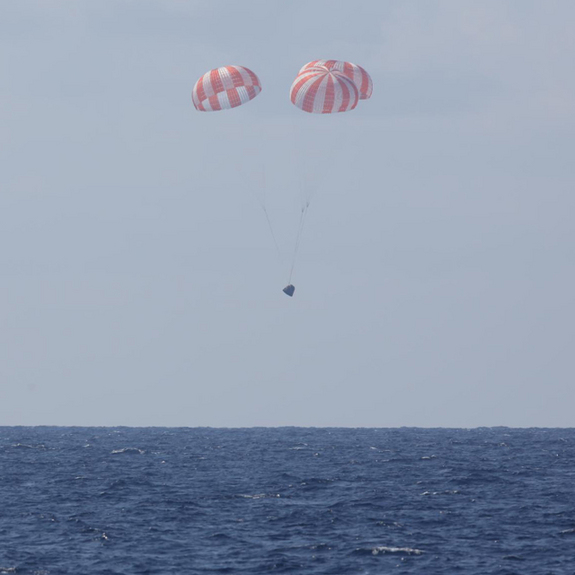
SpaceX's robotic Dragon capsule splashes down in the Pacific Ocean on May 21, 2015, bringing an end to the company's 6th cargo mission to the International Space Station for NASA.
Credit: SpaceX
View full size image
SpaceX's robotic Dragon capsule returned to Earth today (May 21), wrapping up the private spaceflight company's sixth cargo mission to the International Space Station.
The unmanned Dragon spacecraft splashed down today in the Pacific Ocean off the coast of Baja California at 12:42 p.m. EDT (1642 GMT), about 5 1/2 hours after departing the orbiting lab.
SpaceX personnel will soon retrieve the capsule — which brought down more than 3,100 lbs. (1,400 kilograms) of science experiments and other gear — by boat.
"We just got word of the successful splashdown. Congrats!" station astronaut Samantha Cristoforetti of Italy wrote on Twitter, where she tweets as @AstroSamantha.
California-based SpaceX holds a $1.6 billion NASA contract to make at least 12 robotic resupply runs to the space station using Dragon paired with SpaceX's Falcon 9 rocket. The latest flight kicked off on April 14, when the Falcon 9 delivered Dragon to orbit and, in a daring reusable-rocket test, nearly pulled off a historic landing on an unmanned ship in the Atlantic Ocean. (The Falcon 9's first stage managed to hit the boat, but the booster toppled over and exploded.)
NASA also signed a space station resupply deal with Virginia-based Orbital ATK; the company got $1.9 billion to fly eight missions using its Cygnus spacecraft and Antares rocket. The first two flights went well, but the third, in October 2014, ended just seconds after liftoff, when the Antares exploded.
Orbital ATK is currently revamping Antares and will use United Launch Alliance's Atlas V rocket for the next Cygnus flight, which is scheduled for late 2015, and possibly for additional cargo missions as well.
.
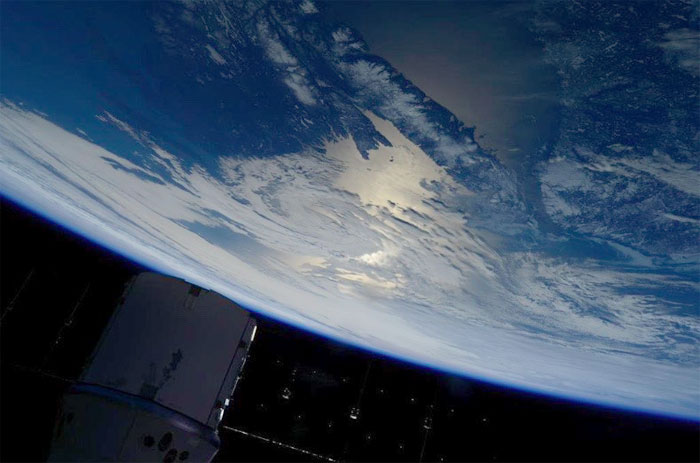
European Space Agency astronaut Sam Cristoforetti captured this shot of SpaceX’s Dragon cargo capsule leaving the International Space Station on May 21, 2015. “Look carefully.. you'll see #Dragon resting on the horizon,” she tweeted along with the photo.
Credit: Samantha Cristoforetti, via Twitter as @AstroSamanthaView full size image
Two other unmanned freighters currently visit the International Space Station: Japan's H-II Transfer Vehicle and Russia's Progress spacecraft. A Progress launched just two weeks after Dragon, on April 28. But the Progress 59 mission failed as a result of a problem with its Soyuz rocket, and the cargo vessel burned up in Earth's atmosphere on May 7 without ever reaching the orbiting lab.
Death by fire is the ultimate fate of all the resupply vessels — even those that make it to the station as planned — except for Dragon, which is built to withstand the extreme conditions experienced during re-entry to Earth's atmosphere.
Another Dragon will head up to the orbiting lab soon: The next SpaceX resupply mission is currently scheduled to launch on June 26.
Quelle: SC
.
Update: 22.05.2015
.
SpaceX Dragon Capsule Splashes Down, Ending Longest Cargo Run
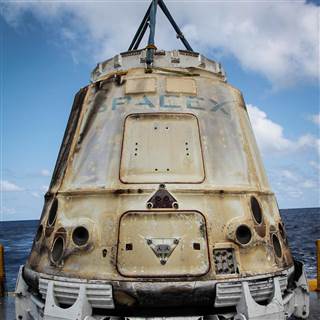
SpaceX tweeted this picture of the Dragon capsule after its recovery from the Pacific Ocean. "Cargo is offloaded and spacecraft is powered down," the company reported. "Dragon back in its nest after about 5 weeks at the space station."SpaceX
.
A robotic SpaceX Dragon capsule splashed down in the Pacific Ocean on Thursday, ending the longest-lasting Dragon resupply mission to the International Space Station.
NASA astronaut Scott Kelly, who's spending almost a year on the space station, used the outpost's robotic arm to unhook the gumdrop-shaped spacecraft from its port on the station's Harmony module and release it for the homeward journey.
Hours later, SpaceX said the Dragon splashed down in the Pacific Ocean at 12:42 p.m. ET, about 155 miles southwest of Long Beach, California.
The capsule was packed with more than 3,100 pounds of equipment and experiments, including an assortment of roundworms that were used to study the effects of spaceflight on the aging process. A recovery ship picked up the Dragon and is bringing it back to port. Eventually, the capsule will be transported to SpaceX's test facility in Texas for processing.
This was the sixth of 15 scheduled cargo resupply missions that California-based SpaceX is taking on under the terms of a NASA contract. SpaceX launched the Dragon with more than 4,300 pounds of cargo on a Falcon 9 rocket on April 14, making for a 37-day stay at the space station. One of the items on board was the first zero-G espresso machine to go into outer space.
Another Dragon shipment is due to be launched on June 26. That delivery could be crucial, in light of last October's failure of an Orbital Sciences Cygnus resupply mission and the loss of a Russian Progress cargo ship in April.
.
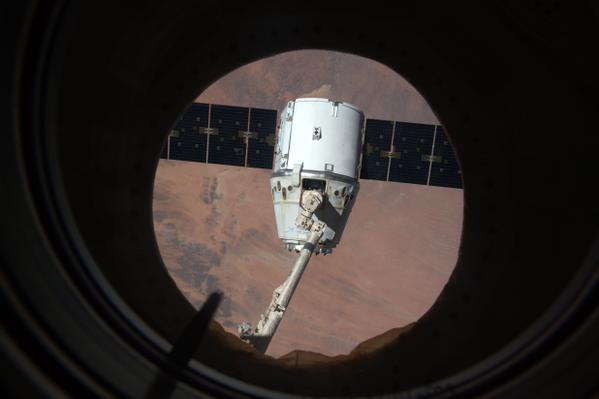
Sam Cristoforetti @AstroSamantha
Now #Dragon is at release position. Houston just gave @StationCDRKelly GO for release. Release window opens in 4 min.
.
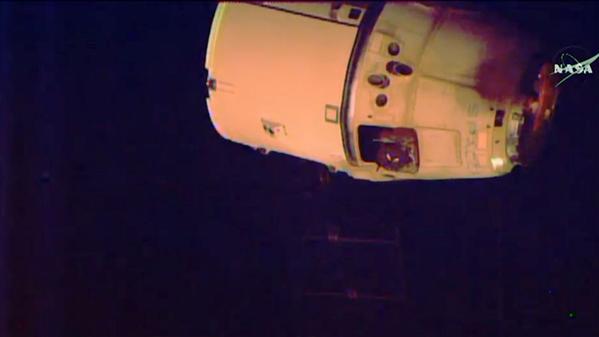
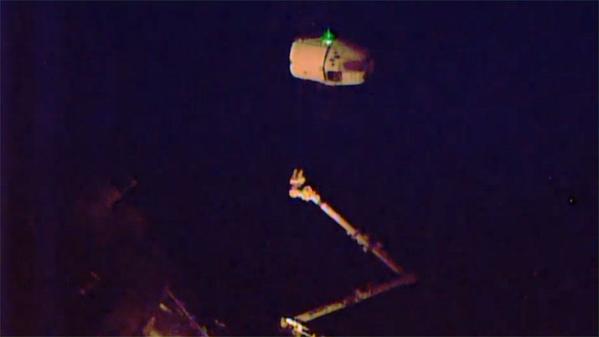
Intl. Space Station @Space_Station
.@SpaceX #Dragon leaving vicinity of @Space_Station after release & trio of departure burns...
.
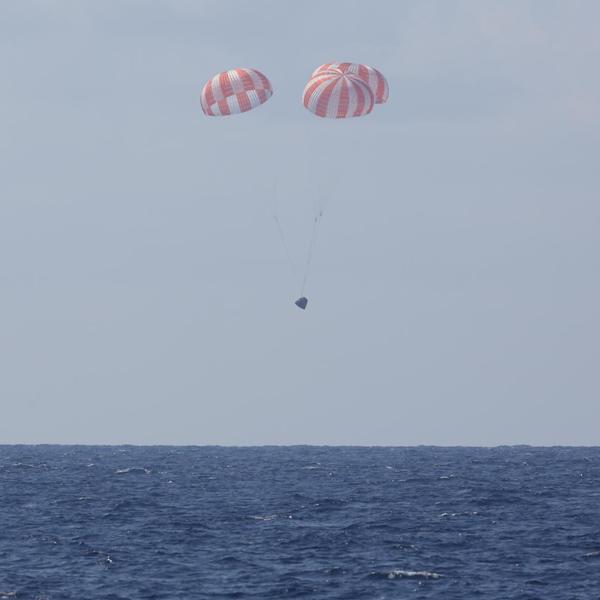
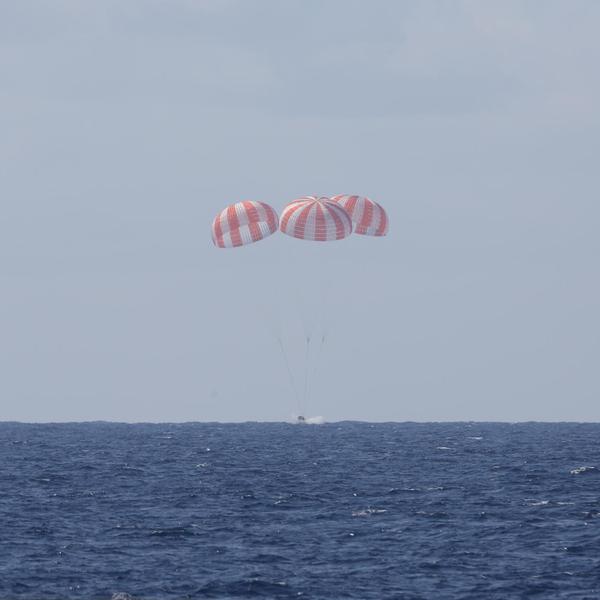
Dragon just completed its longest stay yet at the @Space_Station, returning 3,100 lbs of cargo & science for @NASA.
Quelle:NBC
4627 Views
